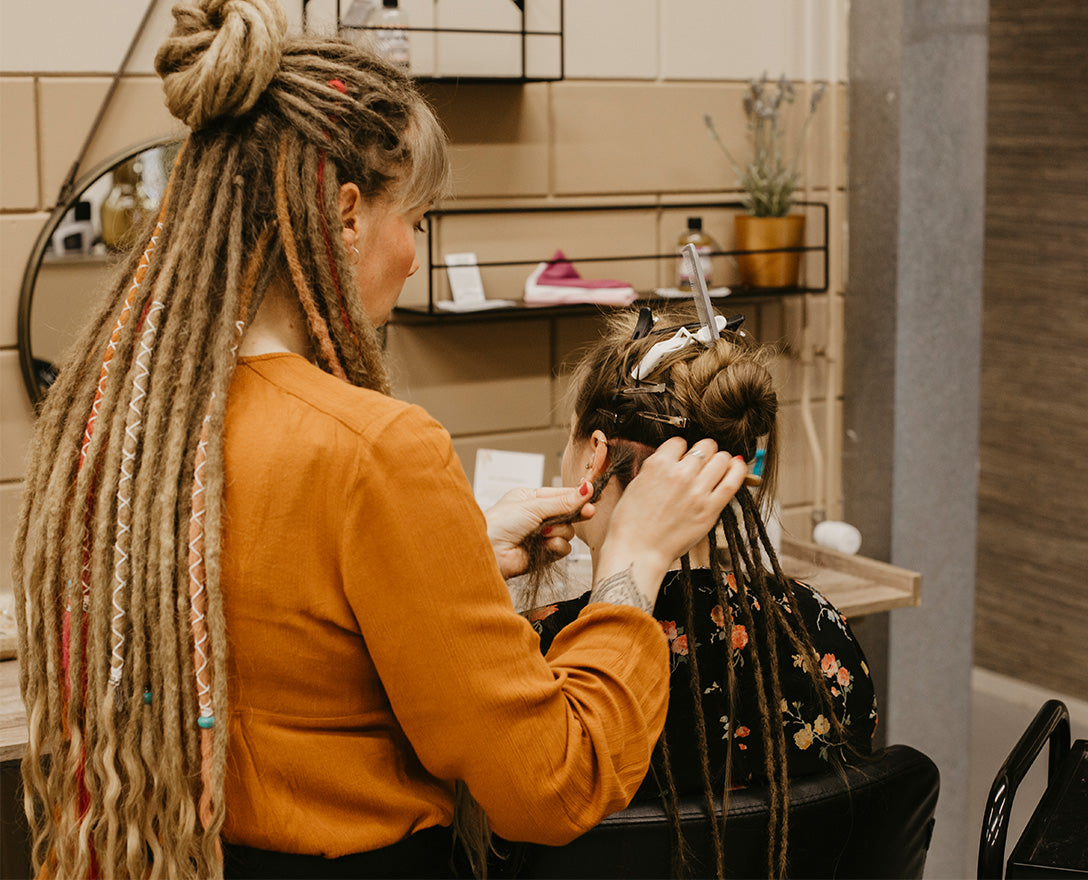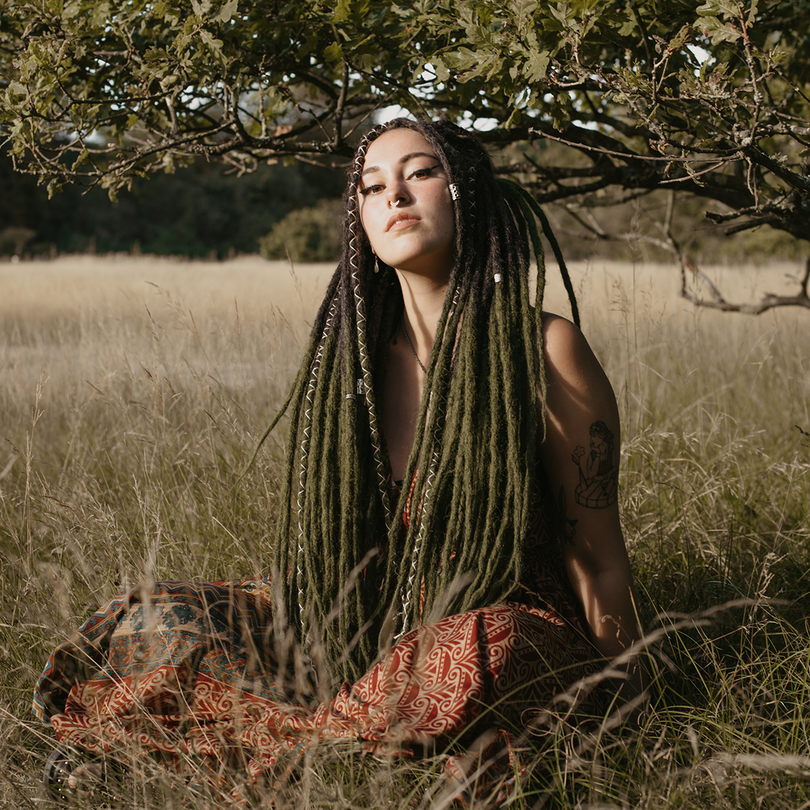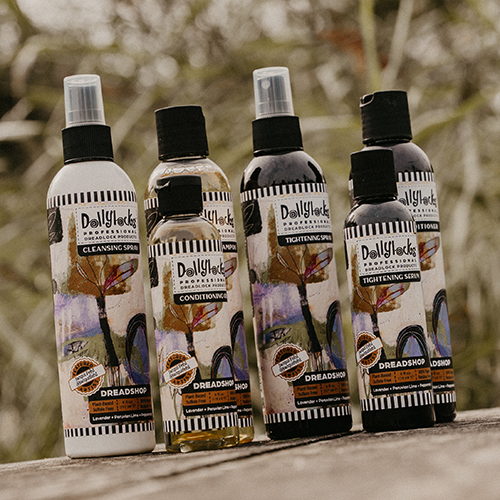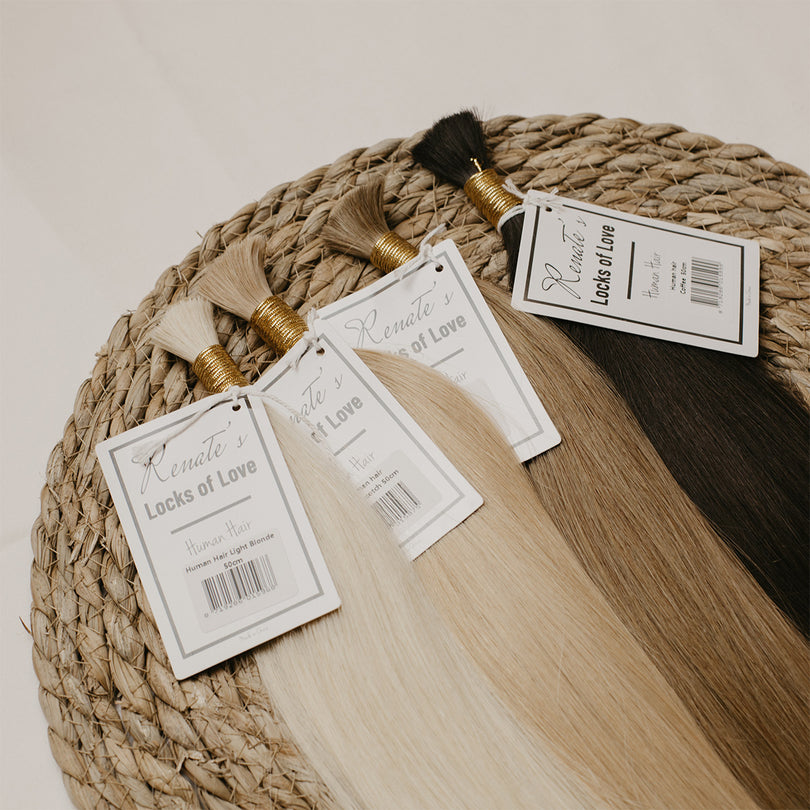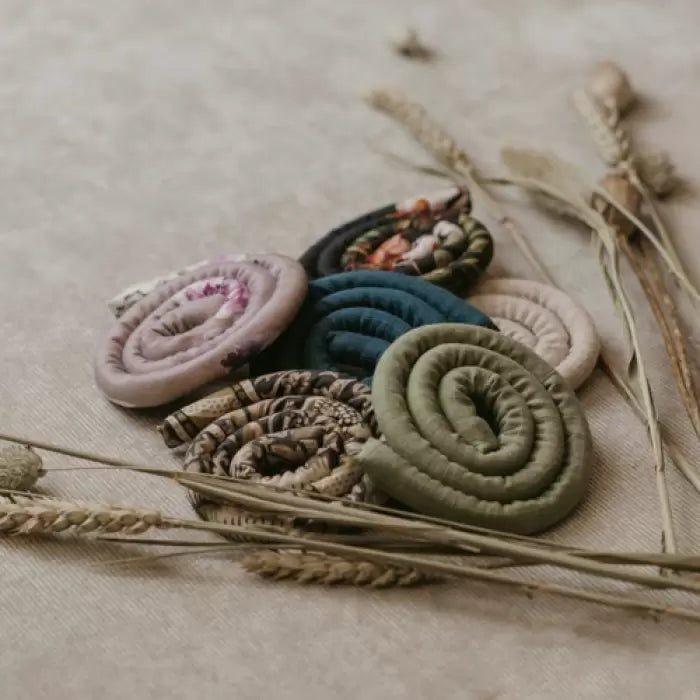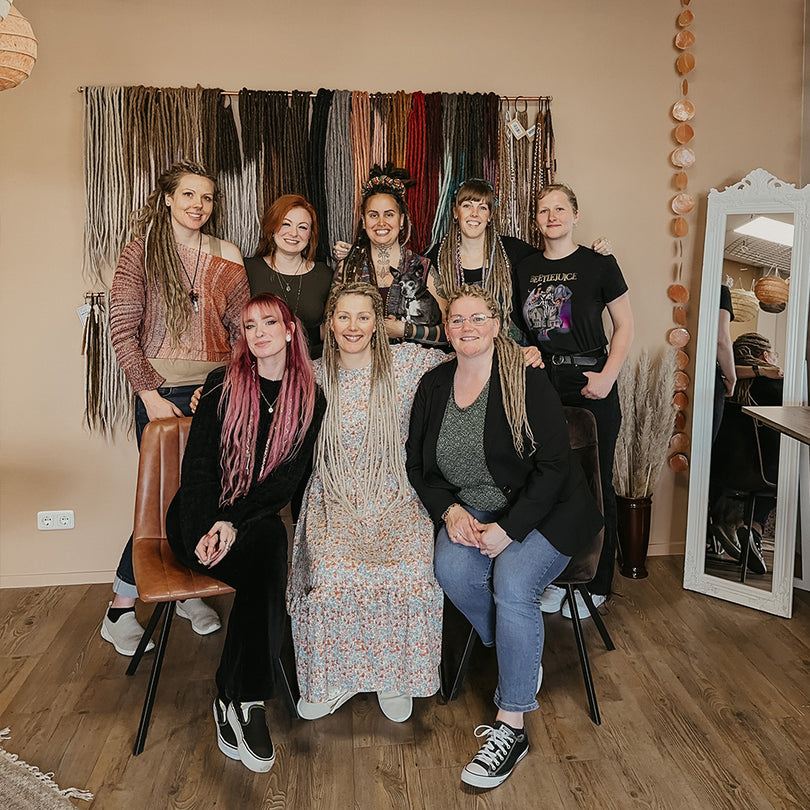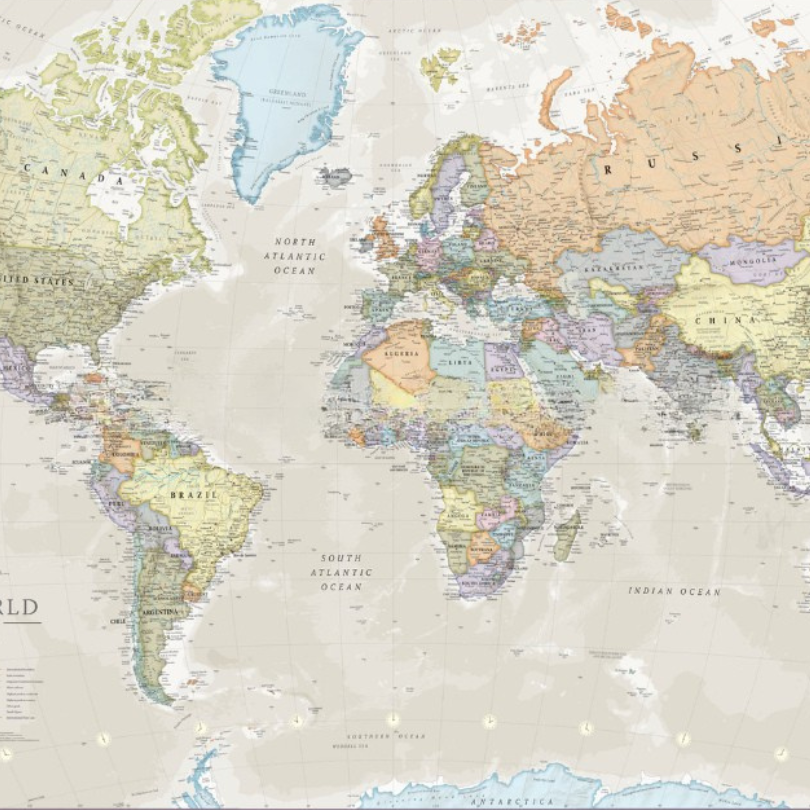Good care for your Real Dreads
Do you have dreadlocks from your own hair? Then you must be already doing all your best to keep them as beautiful and healthy as possible.
Washing your dreads regularly with a special dreadlock shampoo is very important. It’s also good to have your dreads maintained regularly.
Loose hair by the outgrowth of your Real Dreads
Around 2 to 3 months after you had your dreads created or maintained, you may notice that some loose hairs start to appear and the outgrowth is looser. It’s normal, as your hair grows and new hairs come out, the hair will start loosening in the dreads. How quickly this happens depends on different factors:
- The way your dreads are maintained: at Dreadshop we work with our own crochet hook method where the hair is crocheted tightly by the outgrowth
- Your hair type
- How healthy or damaged your own hair is
- How often you wash the dreads
- If you experience a lot of itching ( therefore you scratch your scalp more often and as a result have more hairs coming loose)
Unfortunately, these loose hairs do not always stay neatly on the dreadlock they came off, as people say “the grass is always greener on the other side” ;)
And so the hairs from one dreadlock can get stuck on another dreadlock, one next to it.
Higher chance of real dreads growing together in the starting phase
In the first phase of your real dreads' growth, roughly the first six months, there’s a higher chance of them growing together. This happens because your dreads are not yet fully compact; they still feel fluffy, have more loose hairs, and are in the early stages of forming. As a result, they can grow into one another more easily during this period.
Have your dreads maintained regularly
If you have your dreads maintained every 3-4 months, your loctician can usually loosen the hairs that have grown on the wrong dreads and crochet them back in at the right dreadlock. So you don’t need to loosen anything yourself.
If you get easily irritated by the hair, e.g.when you run your hands through the dreads and get stuck in the hairs or when you want to wear a nice updo but the hairs - which form a “bridge” between two dreads - are making it harder for you, then you can carefully pull the two dreads apart, and you will be able to pull the hairs apart quite easily.
Do you have your dreadlocks maintained less frequently? Or do you maintain your own dreads?
Then it’s good to put in a bit more work yourself between so your dreads do not grow together that much. Take the two dreads that keep getting stuck in one another with the loose hair, and gently pull them apart. The hair that is still attached to the dread can be carefully pulled out. It’s important to see/ feel in which dreadlock the loose hair is rooted. If you pull the wrong end, you might end up pulling the hair out from the roots instead of just separating it. Is there a fair amount of hair in the part you’d like to pull loose? Then the situation is more complex. It’s better to grab a few hairs at a time and pull them loose one by one, instead of pulling the whole loose lock of hair at once.
Palm rolling your dreads is a good time to check and feel around each dreadlock to see if any loose hairs start growing into a dreadlock they are not supposed to, and to immediately pull those hairs apart (gently!). This way you keep an eye on the situation and prevent the dreadlocks from growing together too much.
Switch up your dread hairstyles
Another factor contributing to your dreads growing together, is wearing your dreads in a ponytail or a bun, in the same spot on your head, frequently. As the dreadlocks are then often close together with no separation, there is a greater chance that the hair from one dread will stick to another. You can also get weak spots in the dreads if you often tie them together in the same place.
So it’s better to switch up your hairstyles and wear your dreads loose or half loose from time to time.
Real Dreads can ALL grow together
If you don’t do anything about the loose hairs that start growing into neighbouring dreadlocks for a longer time, you let it get worse and worse until you reach a point where some dreads will start merging at the roots. Of course, quite a lot can be repaired when it comes to real dreads, but in some extreme cases where the dreads have not been touched up for years, it might not be possible to separate the dreads anymore. So it’s better to prevent than fix ;)
You can have your Dreads maintained regularly at our Salon.
Or learn how to maintain your own real dreads!
Healthy scalp is important
Besides the fact that dreads growing together feels unpleasant, your scalp does not have room to breathe which is not healthy.
The bigger the outgrowth, the more loose hairs you have at your scalp. They then have a bigger chance of growing into surrounding dreads, in the end blocking your scalp. As a result, your scalp will have more trouble getting the oxygen it needs. Washing will also become increasingly difficult as your dreads will cover the scalp so you won’t be able to reach it as well and then it’s hard to keep it clean.
Can Synthetic Dreadlock also grow together?
What if you're wearing synthetic dreads? Synthetic dreadlocks are braided into your hair and secured differently than how real dreads are created in your hair. Of course, your hair will continue growing and you might get some loose hairs/ frizz at the roots. But no hairs should come loose from the synthetic dreadlocks themselves as they do with real dreads. Therefore it is highly unlikely that your loose hair will grow the dreads together.
Do you have real and synthetic dreads mixed together? E.g. a few rows of real dreads in the neck and you add synthetic extensions to the rest of your hair for the full head effect? Different types of dreads will not grow together that quickly, simply because synthetic dreads don’t get loose hairs in them like real dreads do. Plus the loose hairs on real dreads have less hold on synthetic dreadlocks compared to real ones.
